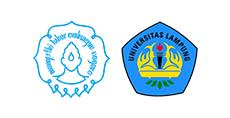The Influence of Internal and External Factors on the Successful Implementation of 5S Work Culture in Vocational Schools
Abstract
Keywords
Full Text:
PDFReferences
Abdullah, A. (2020). Relationship the work culture and training programs within performance. International Journal of Progressive Sciences and Technologies (IJPSAT), 20(1), 92-101. http://dx.doi.org/10.52155/ijpsat.v20.1.1727
Ahkyat, F., Munadi, S., & Rohmantoro, D. (2019). The Effect of Industrial Work Practices on Students’ Readiness at the High School of Vocational Partners PT. Astra Daihatsu Motor. International Journal of Innovative Technology and Exploring Engineering (IJITEE), 9(2), 2278-3075. http://doi.org/10.35940/ijitee.B6244.129219
Anggito, A., & Setiawan, J. (2018). Metodologi penelitian kualitatif. CV Jejak (Jejak Publisher).
Balasundaram, K., Adugna, A., Gobachew, A. M., & Kumar, M. S. (2017). Implementation of 5s methodology for performance improvement in a medium scale industry: A case study. International Journal for Research & Development in Technology, 7(3), 615-620.
Erlinawati, D., Basori, B., & Hatta, P. (2021). Instructional Design to Improve Students’ Entrepreneurial Affective. IJIE (Indonesian Journal of Informatics Education), 5(2), 59-67. https://doi.org/10.20961/ijie.v5i2.53183
Febriani, E. S., Arobiah, D., Apriyani, A., Ramdhani, E., & Millah, A. S. (2023). Analisis Data Dalam Penelitian Tindakan Kelas. Jurnal Kreativitas Mahasiswa, 1(2), 140-153.
https://riset-iaid.net/index.php/jpm/article/view/1447
Hermawan, R., Harlin, H., Fathurohman, A., & Ramadhan, A. A. (2022). Kajian Pengembangan Budaya Kerja dalam Praktik Kejuruan Peserta Didik Di SMK. Jurnal Pendidikan Teknik Mesin, 9(1). https://doi.org/10.36706/jptm.v9i1.17710
Ilahi, C. W., Hadi, S., & Purnomo, P. (2020). Hubungan Penerapan Budaya Kerja 5R, Persepsi Kompetensi Kepribadian Guru, dan Pemahaman Agama dengan Karakter Kejuruan Siswa Kompetensi Keahlian TKJ di SMK Berbasis Islam. Jurnal Pendidikan: Teori, Penelitian, dan Pengembangan, 5(1), 77-81. http://dx.doi.org/10.17977/jptpp.v5i1.13138
Jailani, M. S. (2023). Teknik Pengumpulan Data Dan Instrumen Penelitian Ilmiah Pendidikan Pada Pendekatan Kualitatif dan Kuantitatif. IHSAN: Jurnal Pendidikan Islam, 1(2), 1-9. https://doi.org/10.61104/ihsan.v1i2.57
Maulidina, A., & Wijanarka, B. S. (2023). Analysis of work readiness based on soft skills, machining knowledge, and 5s work culture. European Journal of Education and Pedagogy, 4(4), 53-58. https://doi.org/10.24018/ejedu.2023.4.4.710
Nugroho, T. S., Darmawan, A., & Ekoputro, W. (2023). Persepsi Fenomena Flexing Selebgram Pada Mahasiswa Ilmu Komunikasi Universitas 17 Agustus 1945 Surabaya. In SEMAKOM: SEMINAR NASIONAL MAHASISWA KOMUNIKASI (Vol. 1, No. 01, pp. 731-736).
https://conference.untag-sby.ac.id/index.php/semakom/article/view/1782
Nurlaela, S., Kurjono, & Rasto. (2021). Determinants of work-readiness. Proceedings of the Conference on International Issues in Business and Economics Research (CIIBER 2019), 199-205. https://doi.org/10.2991/aebmr.k.210121.030
Rifa’i, Y. (2023). Analisis Metodologi Penelitian Kulitatif dalam Pengumpulan Data di Penelitian Ilmiah pada Penyusunan Mini Riset. Cendekia Inovatif Dan Berbudaya, 1(1), 31-37. https://doi.org/10.59996/cendib.v1i1.155
Rizkya, I., Sari, R. M., Syahputri, K., & Fadhilah, N. (2021). Implementation of 5S methodology in warehouse: A case study. In IOP Conference Series: Materials Science and Engineering (Vol. 1122, No. 1, p. 012063). IOP Publishing. https://doi.org/10.1088/1757-899X/1122/1/012063
Rohim, F. F. N., Wijayanto, D. S., & Saputra, T. W. (2024). Pengembangan e-Modul Panel Surya dengan Solar Tracker Single Axis pada Mata Kuliah Energi Baru dan Terbarukan Universitas Sebelas Maret. JIPTEK: Jurnal Ilmiah Pendidikan Teknik dan Kejuruan, 17(1). https://doi.org/10.20961/jiptek.v17i1.79284
Safitri, P. A., Basori, B., & Liantoni, F. (2023). The Influence of the Learning Cycle Blended Learning Model on Student Learning Outcomes. Journal of Informatics and Vocational Education, 6(3). https://doi.org/10.20961/joive.v6i3.76753
Santika, W., Hermansah, B., & Selegi, S. F. (2023). Analisis Kemampuan Siswa Dalam Menentukan Unsur Intrinsik Cerita Dongeng Si Kancil Dan Buaya Kelas IV Sekolah Dasar. JPDI (Jurnal Pendidikan Dasar Indonesia), 8(1), 7-11. http://dx.doi.org/10.26737/jpdi.v8i1.3762
Susanti, W., Tendra, G., Yuliendi, R. R., Simeru, A., Johan, R. M., & Mulya, R. (2023). The Inquiry Collaborative Learning Design Virtual Laboratory Based and Remote Virtual. Indonesian Journal of Informatics Education, 7(1), 1-7. https://doi.org/10.20961/ijie.v7i1.77292
Wani, A. S., Yasmin, F. A., Rizky, S., Syafira, S., & Siregar, D. Y. (2024). Penggunaan Teknik Observasi Fisik dan Observasi Intelektual Untuk Memahami Karakteristik Siswa di Sekolah Menengah Pertama. Jurnal Pendidikan Tambusai, 8(1), 3737-3743. https://doi.org/10.31004/jptam.v8i1.12974
Wibowo, A. E. (2020). Industrial work culture in vocational learning: a relevance to occupational world. In Journal of Physics: Conference Series (Vol. 1446, No. 1, p. 012009). IOP Publishing. https://doi.org/0.1088/1742-6596/1446/1/012009
Yusra, Z., Zulkarnain, R., & Sofino, S. (2021). Pengelolaan Lkp Pada Masa Pendmik Covid-19. Journal Of Lifelong Learning, 4(1), 15-22. https://doi.org/10.33369/joll.4.1.15-22













